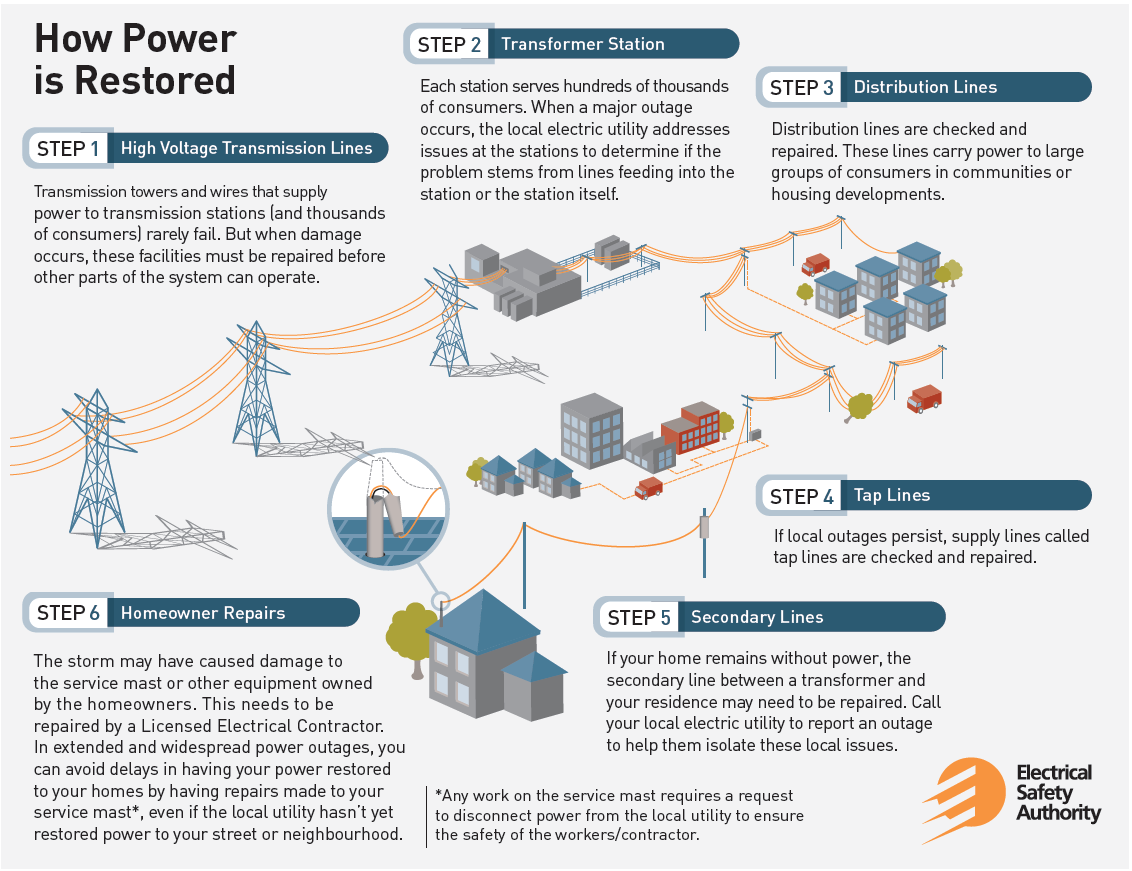Severe Thunderstorms, Lightening and Hail and Tornadoes
Ministry of Ontario - Thunderstorm
Ministry of Ontario - Tornadoes
Thunderstorms are often accompanied by high winds, hail, lightning, heavy rain and in rare cases can produce tornadoes. Hail is formed when updrafts in thunderclouds carry raindrops upward into extremely cold areas of the atmosphere, where they freeze and merge into lumps of ice.
Thunderstorms, lightning and hail:
- Thunderstorms and lightning occur throughout Canada but less frequently in the North. On average, 10 people die each year in Canada and up to 160 are injured during such storms.
- Thunderstorms are usually over within an hour, although a series of thunderstorms can last several hours.
- Hailstorms occur across Canada, mostly from May to October. They are most frequent in Alberta, the southern Prairies and in southern Ontario.
- Some hailstones are the size of peas while others can be as big as grapefruits.
- Hail comes down at great speed, especially when accompanied by high winds and can cause serious injuries and damages.
What to do if outside
- If you are caught outside and you can see lightning or hear thunder, you are in danger of being hit. Seek shelter immediately either in an enclosed building or a hard-topped vehicle. There is no safe place outside in a thunderstorm.
- If caught outside far from a safe location, stay away from tall objects, such as trees, poles, wires and fences. Take shelter in a low lying area.
- Wait 30 minutes after the last rumble of thunder before going outside again.
What to do if inside
Before a severe thunderstorm, unplug radios, televisions and appliances (especially those that may start up automatically when the power is restored). Listen for weather updates on your wind-up or battery-powered radio.
- If you need to use the phone during a thunderstorm use a cordless phone.
- Stay away from items that may conduct electricity, such as corded telephones, appliances, sinks, bathtubs, radiators and metal pipes.
- If hail is forecast, protect your vehicle by putting it in the garage or other enclosed space.
- Take cover when hail begins to fall. Do not go out to cover plants, cars or garden furniture.
- When a hailstorm hits, stay indoors, and keep yourself and your pets away from windows, glass doors and skylights which can shatter if hit by hailstones.
Warning signs of a potential tornado
- Severe thunderstorms.
- An extremely dark sky, sometimes highlighted by green or yellow clouds.
- A rumbling or a whistling sound caused by flying debris.
- A funnel cloud at the rear base of a thundercloud, often behind a curtain of heavy rain or hail.
What to do
In all cases
- Get as close to the ground as possible, protect your head and watch for flying debris.
- Do not chase tornadoes - they are unpredictable and can change course abruptly.
- A tornado is deceptive. It may appear to be standing still but may in fact be moving toward you.
In a house
- Go to the basement or take shelter in a small interior ground floor room such as a bathroom, closet or hallway.
- If you have no basement, protect yourself by taking shelter under a heavy table or desk.
- In all cases, stay away from windows, outside walls and doors.
On a farm
If your personal safety is not at risk, you may have time to open routes of escape for your livestock. Open the gate, if necessary, and then exit the area in a direction perpendicular to the expected path of the tornado.
In a recreational vehicle or mobile home
- Find shelter elsewhere, preferably in a building with a strong foundation.
- If no shelter is available, crouch down in a ditch away from the mobile home or recreational vehicle. Beware of flooding from downpours and be prepared to move.
In a high rise building
- Take shelter in an inner hallway or room, ideally in the basement or on the ground floor.
- Do not use the elevator.
- Stay away from windows.
In a gymnasium, church or auditorium
- Large buildings with wide-span roofs may collapse if a tornado hits.
- If you are in one of these buildings and cannot leave, take cover under a sturdy structure such as a table or desk.
In a vehicle
- If you spot a tornado in the distance go to the nearest solid shelter.
- If the tornado is close, get out of your car and take cover in a low-lying area, such as a ditch.
- Do not take shelter under an overpass or a bridge. Winds can accelerate under an overpass or a bridge and cause injury or death from flying debris.


